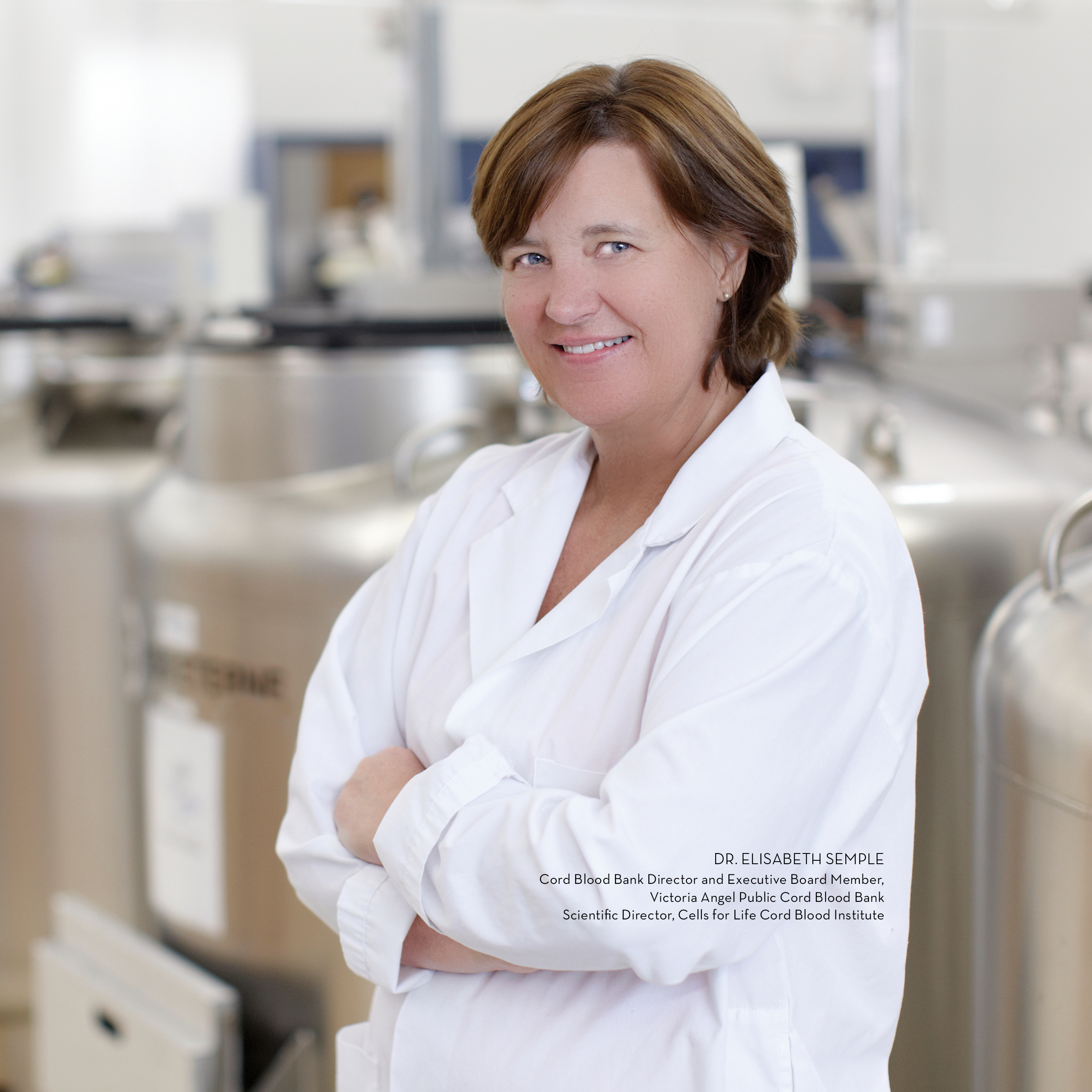Elisabeth Semple, Scientific Director with Cells for Life, has been working with cord blood since the mid 90s. Considering the first cord blood transplant took place in Paris in 1988, it’s fair to say Elisabeth has followed the evolution of cord blood banking closely since its very early days.
Her career in cord blood began in Europe, where cord blood processing was a key part of her role. “At the company I worked for, I was the only one who had experience in blood products, and [cord blood processing] was so similar. So I took that on, and I really enjoyed it. Cord blood is very fascinating because it’s a stem cell.”
Elisabeth eventually moved to Canada, where she continued her work in various roles. She first began working with Cells for Life in 2006 in a consultant role, and then joined the company in 2009.
“Part of my role as Scientific Director is to keep abreast and updated on what’s happening in the field, and express this in layman’s terms so people can understand what’s happening,” she says. “I also make sure day-to-day operations and processing is up to the industry’s latest quality standards.”
Focus on Quality
Elisabeth says her primary goal with Cells for Life is to have a product that will engraft and save somebody’s life. This means the quality must be first-rate, to ensure the engraft will work when it is transplanted. She emphasizes that everything at Cells for Life is geared towards following the gold standard in quality.
“You never lose sight of the end product and end use of what you’re doing,” she says. “Our whole quality system and whole approach to our clients is focused on that goal. What we have at the end must be a viable, potent product that would help somebody.”
Cells for Life has been around for a long time – it’s one of the oldest cord blood banks in Canada. Our staff has over 20-years of experience with storing and freezing cells and using the equipment. “This experiences gives our clients a lot of assurance that we’re going to do our best to make it work.”
Life Insurance for Families
Cord blood banking is a valuable form of life insurance for families. “You never know what is going to happen in life,” Elisabeth points out. Having experienced tragedy in her own family, Elisabeth understands the desire to do everything you can to protect the ones you love.
“I say to my friends – you have fire insurance on your house. You don’t think it will ever burn down, but you have it just in case, because if it does happen it’s a disaster. And you want to do everything you can to protect your family from that risk.”
Cord blood is another tool in the box for transplant physicians, Elisabeth explains. Clinical research suggests cord blood stem cells hold potential to offer therapy in an ever-growing list of diseases and disorders, such as Cerebral Palsy, Type 1 Diabetes and Spinal Cord Injury. Currently, cord blood stem cells are being used to treat over 80 different diseases.
The possibilities really are endless. “What’s fascinating now is the new uses in regenerative medicine – especially in brain injury,” says Elisabeth. “We’ve seen a little bit of data, which is encouraging, but we haven’t seen a lot. The more that comes out, the better we’ll know – but so far it looks promising.”
The fact remains cord blood is too precious to waste, and when families bank their baby’s cord blood they can rest assured their family is protected in so many ways.
At the end of the day, helping families is exactly what inspires Elisabeth to do the work she does. “We can save lives and improve the quality of life for people, and that’s why you get into healthcare in the first place,” she says. “It’s really coming through our work here at Cells for Life as well.”

